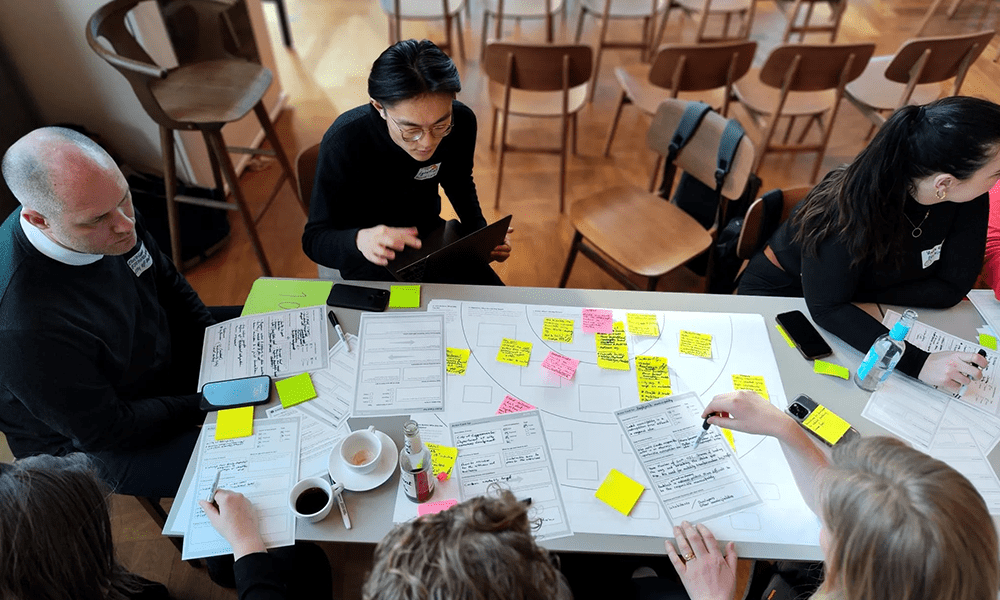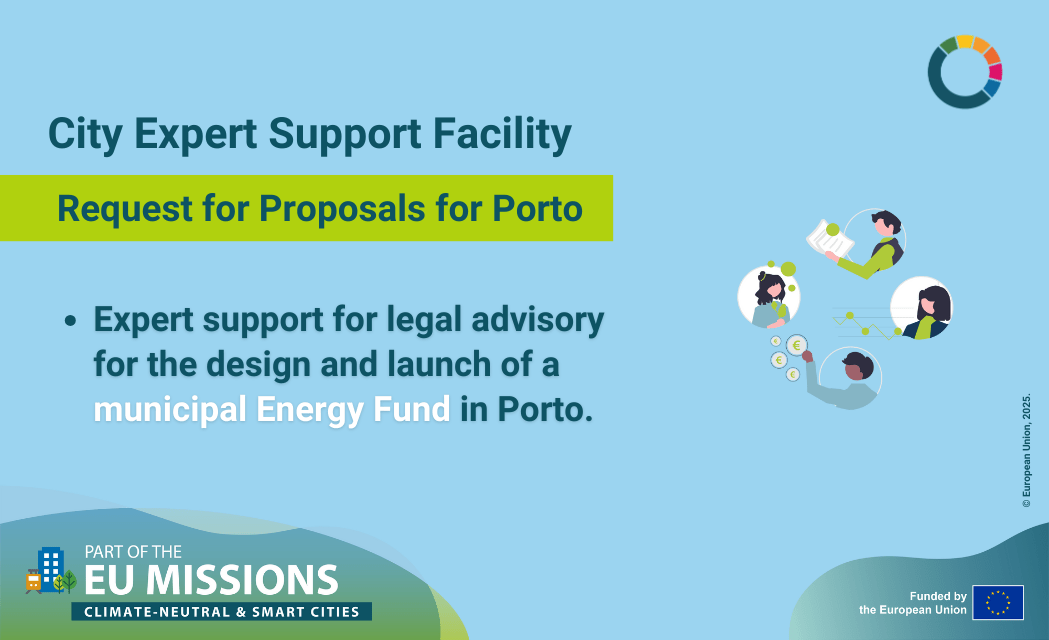Written by Lilybell Evergreen, Alan MacKenzie, and Georgia Cameron
On the road to reach climate neutrality, cities across Europe are confronting a well-established obstacle when it comes to making policy: traditional approaches often fall short when tackling the complex, interconnected challenges of climate action. The tight links to other complex topics like industrial policy or energy security multiply the difficulties of action and, too often, cities spend their time managing symptoms, rather than getting to the underlying problems that they see.
But within the EU Cities Mission, where more than 100 Mission Cities are striving to become climate neutral by 2030, new approaches have been developed, so read on to see three examples of how cities are being helped to overcome these roadblocks.
What is the role of policy development in the Cities Mission?
What if cities could leverage all their existing capabilities – regulatory, financial, and collaborative – via a unified approach to create the systemic change needed to meet climate goals? Based on leading theory and lessons from supporting cities on their journey and implementing their ambitious Climate City Contracts (CCCs), mission-driven policy innovation approach makes that possible.
Mission-driven policy innovation helps cities accelerate their transition to climate neutrality by connecting the dots between policy, regulation, and financing in ways that unlock synergies and accelerate progress.
The approach goes beyond traditional policymaking by addressing the root causes of complex challenges and integrating real-life experiences from cities. It recognises that achieving climate neutrality requires the dynamic and iterative use of all the tools available to cities, not just policy and regulation, but also financial, convening, and educational instruments. By focusing on how to orchestrate these tools effectively, Mission-driven policy innovation enables cities to tackle ambitious climate goals with scalable, impactful interventions.

How is mission-driven policy innovation valuable for cities?
Rather than creating entirely new structures, it builds upon existing expertise and uncovers opportunities for synergies that are often missed by siloed approaches. This approach empowers cities to work across governance levels, leveraging their full range of powers to accelerate actions and amplify results for greater impact.
The transition to climate neutrality represents a ‘wicked problem’: complex, multifaceted challenges that resist conventional solutions. As can be seen from the figure here, mission-driven policy innovation offers cities several distinct advantages to connect their goals and actions.
How does it differ from traditional approaches?
Traditional policymaking tends to work in departmental silos, with environmental policies and actions developed separately from those related to transport, housing, or the economy. This fragmentation often leads to inefficiencies, contradictions, and missed opportunities.
Mission-driven policy innovation differs in several key ways:
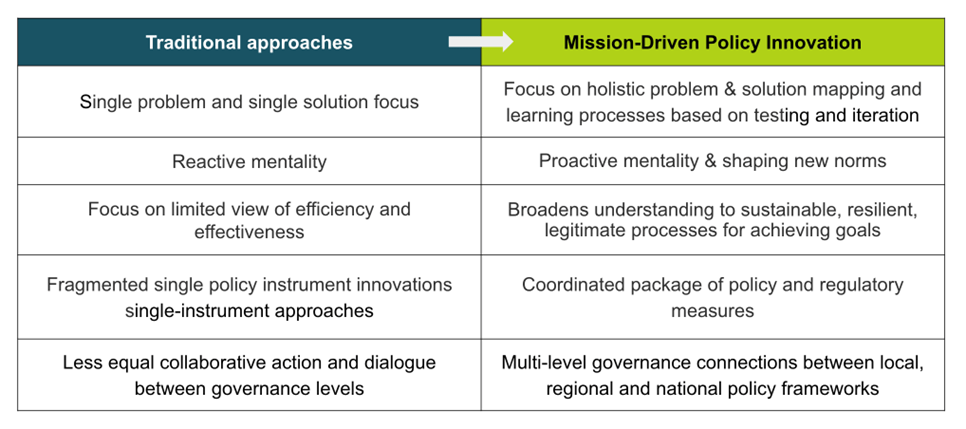
Therefore, ensuring the levers of finance, regulation, policy, and governance all support cities’ essential actions towards climate neutrality is necessary to accelerate and amplify them at the pace and scale needed.
With this in mind, it’s important to recognise that collaborative approaches are needed to overcome barriers that sit beyond any single city’s sphere of influence.
Indeed, cities are challenging their own thinking and working to address problems without traditional labels like ‘finance’ or ‘environment’. And when it comes to climate issues, they are also engaging and activating citizens and the private sector whose emissions and behaviours and ownership often lie outside the traditional responsibilities of the city.
For example, in Lahti, Finland, forests cover 63% its the land area, offering “the largest and most important carbon sinks” in the region but only 24% of it belongs to the city and the rest of is privately owned. Innovative ways to involve the private sector in related nature-based solutions therefore would be essential for action. As the NetZeroCities policy paper on nature-based solutions notes, this could include “creating incentives, reducing barriers to entry, and fostering partnerships between public and private entities” or “providing tax incentives, and supporting pilot projects that demonstrate the viability and profitability of NbS.”
Another example is the challenge of the co-production of energy systems in Italy being slowed down by several barriers, including: a lack of public and private sector skills; the absence of ad hoc protocols, agreements or standardised procedures; and insufficient regulatory, financial, and data resources. LetsGOv is a joint pilot between the 9 Italian Cities involved in the EU Cities Mission, committed to collective experimentation on multi-level governance, which aims to work across three levels: networks, clusters (targeting engagement, data, and finance), and the city.
In a NetZeroCities’ brief on policy innovation and energy, partner organisation Energy Cities capture the process for cities taking a mission-driven approach:
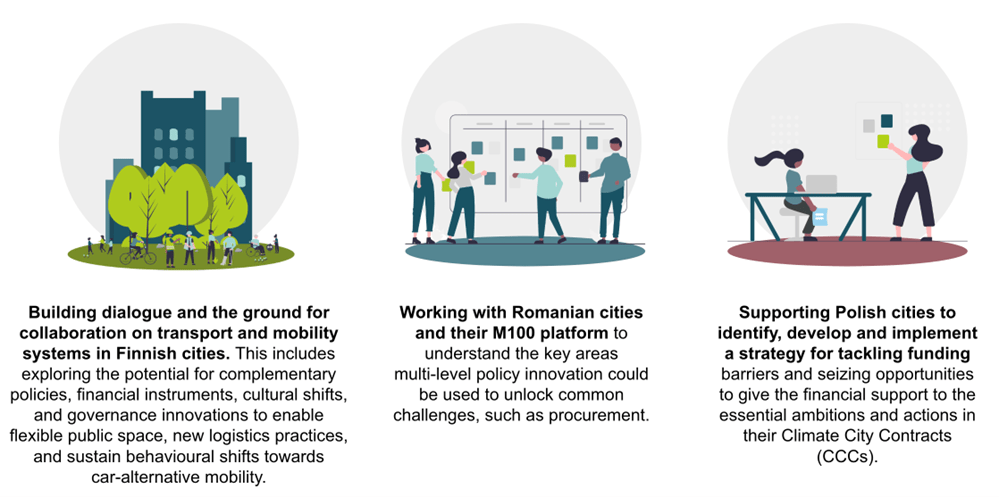
To engage into a mission-driven policy innovation, it is important to characterise the issue(s) at stake: are the issues regulatory, economic, financial, technical? And what are the behaviours and beliefs behind [them]? Then different policy levers and coherent policy mixes should be used to address them, including soft levers (information, planning, vision, etc.), medium levers (subsidies, norms, etc.) and hard levers (regulations, laws, etc.).
And cities across Europe are already deploying ambitious innovations to accelerate important climate agendas. The three examples here show how NetZeroCities is helping cities navigate complex challenges and achieve progress.
Getting started with mission-driven policy innovation
Is your city ready to embrace this approach or discuss how it may help you untangle gridlocks? Consider whether you’re facing any of these challenges:
- Difficulty translating your climate action plan into a clear policy agenda
- Struggling to identify and address policy and regulatory barriers
- Needing greater visibility of your existing policy landscape
- Facing complex challenges with significant local or national policy implications
- Understanding policy barriers but unsure how to design dynamic responses
- Having proposed policy responses but needing help to formalise, implement, and adjust them
Support available for cities
The EU Cities Mission platform, currently managed by NetZeroCities, recognises the complexity of navigating policy innovation and is already supporting cities on this journey.
You can find many policy briefs developed via EU policy labs with Mission Cities where they exchanged on specific issues with each other and thematic policy experts. The outcome is the creation of Mission Cities’ policy briefs, which offer a set of policy recommendations aimed at EU decision-makers and national authorities.
To date, these papers cover:
- industry decarbonisation
- decarbonisation of agriculture and food systems
- circular economy; finance and investment
- nature-based solutions
- supporting energy communities
- built environment
- mobility policy
- stakeholder perspectives on EU urban data governance 2025.
To focus on your city’s context and challenges, there are also further resources for mission-driven policy innovation available. We are building a policy navigation kit with different tools and resources, including examples of workshops, developed as we work together with cities on their real challenges, and we can share examples and templates to support your journey.
For specific challenges – such as on energy, procurement, and mobility – there is tailored city support (the three examples above of Finnish, Romanian, and Polish cities are all examples of this) and, in addition to national collaboration, targeted sprints and labs are possible.
- If you are a Mission City, you can contact your city advisor, who can support you to find more resources and potential support.

The journey to climate neutrality demands not just ambitious targets but innovative approaches to achieving them. As we have seen, mission-driven policy innovation provides a framework both to translate climate commitments into tangible progress and overcome implementation hurdles to support your city to reach its climate goals.
